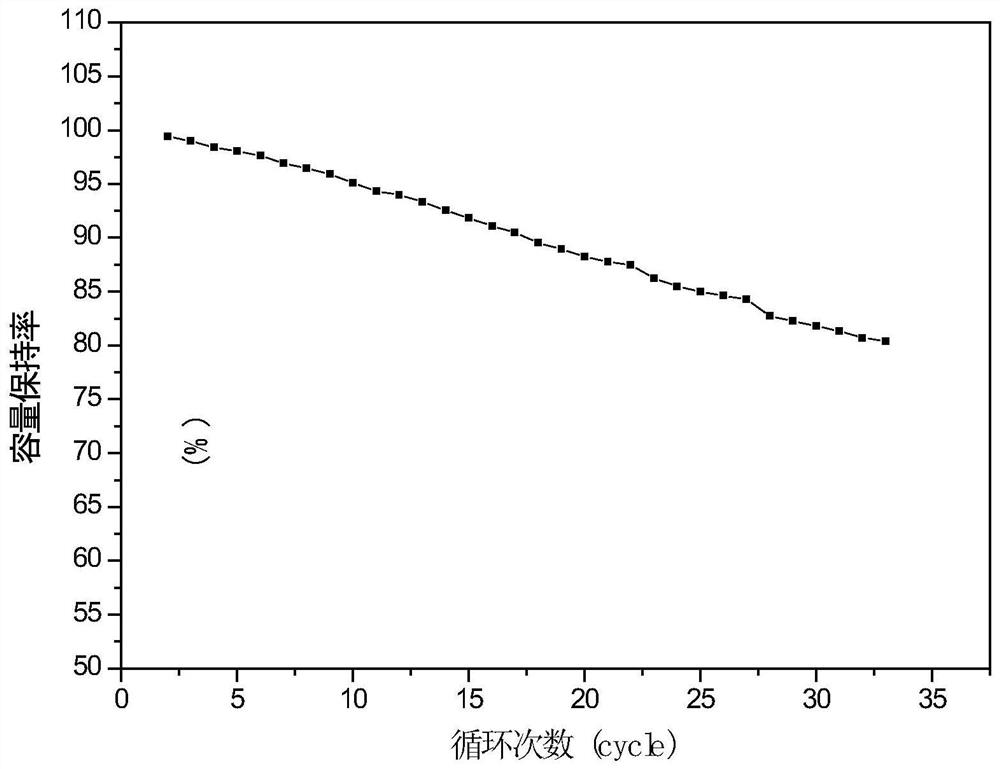A method for preparing conductive fiber paper with a lithium-philic-phobic gradient structure and conductive fiber paper
A conductive fiber and gradient structure technology, applied in the direction of synthetic cellulose/non-cellulose material pulp/paper, special paper, structural parts, etc., can solve the problems of battery combustion and explosion, low Coulombic efficiency, and low Coulombic efficiency, and achieve enhanced Effects of affinity, enhanced paper strength, and increased energy density
- Summary
- Abstract
- Description
- Claims
- Application Information
AI Technical Summary
Problems solved by technology
Method used
Image
Examples
Embodiment 1
[0030] The carbon nanotube raw material (commercial carbon tubes, purchased from Zhongke Times, high-purity multi-walled carbon nanotubes (TNM0)) was placed in the reaction chamber of the atomic layer deposition instrument, and the temperature of the reaction chamber was evacuated and heated to 100-200 ° C. Set the temperature to evaporate the water adsorbed by the carbon nanotubes. The carbon nanotubes are kept at the set temperature for 20 minutes, and the pressure in the reaction chamber is lower than 0.01 atmospheres; Residual gas in the carbon nanotubes was removed and purged for 30s.
[0031] Close the gas outlet valve, and flow into the reaction chamber in the form of pulses, trimethylaluminum flow, for 5s, and keep it for 3min; open the gas outlet valve, pass in the sweeping gas in the form of pulses, and clean for 30s; close the gas outlet valve, vacuumize, and remove Excessive reaction by-products; then feed water to make trimethylaluminum react with carbon nanotubes...
Embodiment 2
[0034]The carbon nanotube raw material is placed in the reaction chamber of the atomic layer deposition instrument, and the temperature of the reaction chamber is evacuated and heated to a set temperature of 100-200 ° C. The carbon nanotubes are kept at the set temperature for 20 minutes, and the air pressure in the reaction chamber is lower than 0.01 atmospheric pressure; open the air outlet valve, pass in the sweeping gas in the form of pulses, and sweep for 30s.
[0035] Close the gas outlet valve, enter in pulse form, diethylzinc for 5s, and keep for a period of 3min; open the gas outlet valve, pass in sweeping gas in the form of pulse, and clean for 30s; close the gas outlet valve, vacuumize, remove excess reaction By product; then pass through hydrogen peroxide, the hydrogen peroxide reacts with the diethyl zinc on the surface of carbon nanotubes to generate monolayer ZnO, and repeat the above steps until reaching the required number of wrapping circles of carbon nanotube...
PUM
 Login to View More
Login to View More Abstract
Description
Claims
Application Information
 Login to View More
Login to View More - R&D
- Intellectual Property
- Life Sciences
- Materials
- Tech Scout
- Unparalleled Data Quality
- Higher Quality Content
- 60% Fewer Hallucinations
Browse by: Latest US Patents, China's latest patents, Technical Efficacy Thesaurus, Application Domain, Technology Topic, Popular Technical Reports.
© 2025 PatSnap. All rights reserved.Legal|Privacy policy|Modern Slavery Act Transparency Statement|Sitemap|About US| Contact US: help@patsnap.com

